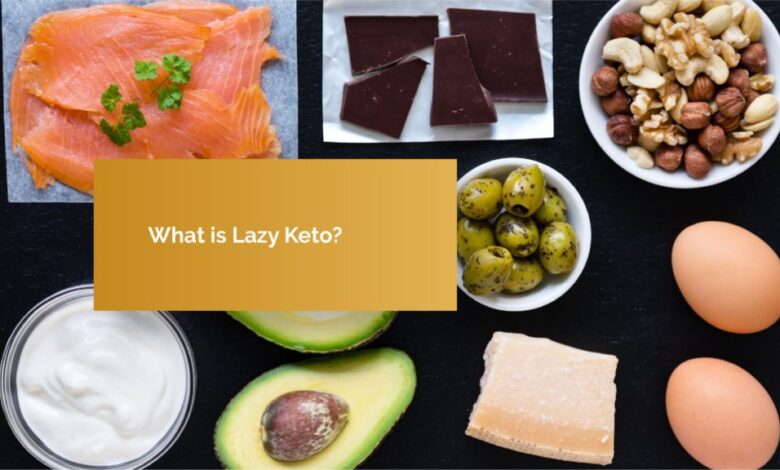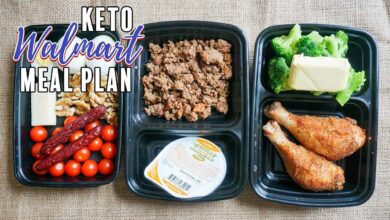
Embarking on a weight-loss journey can feel like climbing a mountain, especially when complicated diets demand counting every bite, tracking each macro, and stressing over perfection. What if you could take a lighter, simpler path up that mountain, still get results, and actually enjoy the climb? That’s where the concept of Lazy Keto comes in—a relaxed, approachable version of the classic ketogenic diet that allows you to focus mainly on reducing carbohydrates, without obsessing over fats and proteins. In this post, I’ll walk you through what Lazy Keto is, why it can work, how to hack it for success in Africa, the US, and Europe, and all the practical steps to succeed—including pitfalls to watch, meal ideas, lifestyle tweaks, and more.
Read Also Keto Diet for Beginners 7 Essential Tips: Your Ultimate Starter Guide
What is Lazy Keto?
Lazy Keto is a simplified variation of the ketogenic diet. Instead of meticulously tracking your intake of fats, proteins, and total calories, you primarily focus on limiting carbohydrates—typically to around 20–50 grams a day (or about 5–10% of total calories). (Healthline)
Because it reduces complexity, it’s accessible to many people who find a full ketogenic diet too restrictive or overwhelming. For example, one definition says: “Lazy keto is to eat no more than 20 grams of carbohydrates per day without counting calories or tracking the other macronutrients.” (Healthline)
It’s worth noting that because you’re not tracking fats and proteins as closely, you might not reliably enter the metabolic state of ketosis (where your body burns fat for fuel instead of glucose). (ABC News)
In short: Lazy Keto = low-carbs + less tracking. It’s easier, more flexible, but also requires smart choices if you want real weight-loss success.
Why Lazy Keto Can Be a Smart Choice
Lowering carbs to trigger fat burn
When you reduce your carbohydrate intake significantly, your body can shift from using glucose (from carbs) to using stored fat for energy. That’s one of the core benefits of ketogenic approaches. (NCBI)
By focusing on carbs only, Lazy Keto lowers a major trigger for insulin release (insulin being the hormone that encourages fat storage) and can help you reduce appetite, which supports weight loss. (Healthline)
Simpler, more sustainable for many
Tracking every macronutrient, weighing meals, or logging food can become mentally exhausting—and for many people, that’s what causes diet failure. Lazy Keto shifts the burden: you track only carbs, which simplifies the process. (Medical News Today)
In regions where eating out, family meals, or irregular schedules are the norm (which covers much of Africa, parts of the US, and Europe alike), a simpler diet can mean better adherence—and adherence often beats perfection when it comes to weight loss.
Can still support weight loss
Even if you don’t fully reach ketosis, simply cutting carbs drastically can reduce calorie intake and improve blood-sugar control, both of which help with weight loss. (Healthline)
In other words: you may get decent fat burn, less hunger, and better metabolic health—even if you’re not “perfect keto.” That makes Lazy Keto appealing for real-world results.
Works across geographies
Whether you’re in Accra, New York, London or Nairobi, the core principle is the same: reduce carbohydrate intake, focus on whole foods, and create an energy deficit. The food sources and cultural flavours might differ, but the mechanism remains. Therefore, this is a weight-loss strategy with global relevance.
How Lazy Keto Works: The Science Behind It
When you eat carbohydrates, your body converts them into glucose, uses what it needs for energy, and stores the rest. Insulin rises in response to carbs, signalling the body to store fat. (NCBI)
If you dramatically reduce carbs, your glucose stores become low, insulin falls, and your body looks for alternative fuel sources—fat and ketones. In classic keto, you track fat and protein to enter and maintain ketosis (where ketone bodies become fuel). But in Lazy Keto you may or may not reach full ketosis: you may simply be in a low-carb fat-burning mode. (Atkins)
Some key metabolic steps:
- Glycogen depletion: With low carbs your stored glycogen gets used up.
- Fat mobilisation: Your body starts breaking down stored fat.
- Ketone production: If conditions permit (very low carbs + moderate protein + high fat) you produce ketone bodies; but Lazy Keto may or may not hit this state.
- Appetite reduction: Because low-carb, high-fat/protein meals tend to fill you more, you often eat less overall. (Dr. Axe)
So you get the fat-burning benefits without full macro-tracking stress—but you still need to be mindful of food quality, calories, and nutrient sufficiency if you want lasting success.
Setting Your Lazy Keto Framework
1. Choose your carbohydrate cap
Decide on a realistic daily net-carb target. For many, 20–50 grams works as a range. (Perfect Keto)
In Africa or markets where food labels may be less precise, aim for simpler rules: avoid bread, rice, pasta, sugary drinks, starchy tubers (or reduce them heavily).
2. Focus on whole, nutrient-dense foods
Even though Lazy Keto is “lazy” in tracking, don’t ignore quality. Choose:
- Lean meats, fish, eggs, poultry
- Healthy fats: avocado, olive oil, nuts, seeds
- Non-starchy vegetables: spinach, kale, broccoli, bell peppers
- Low-sugar fruits in moderation: berries, avocado, etc.
Avoid heavily processed “keto” junk—quality matters. (Dr. Axe)
3. Don’t ignore protein & fat entirely
Although you won’t track them strictly, you still need enough protein to preserve muscle mass (especially with weight loss) and enough healthy fats for energy. If you eat too much protein it might convert to glucose via gluconeogenesis and hinder fat burning. (Medical News Today)
4. Create a calorie deficit
Weight loss inherently comes down to “calories in vs calories out”. Even with carb restriction, if you eat huge amounts of very high-fat foods you might still consume more calories than you burn. So portion control, movement, and mindful eating still apply.
5. Stay consistent and flexible
Pick a system you can sustain. Lazy Keto’s flexibility means you can adapt to local foods, social meals, travel, and still stay “on track”.
Quick Hacks to Master Lazy Keto – and Make It Work for You
Here are actionable, real-world hacks to make Lazy Keto work—especially useful whether you’re in Ghana, the USA or Europe.
Hack 1: Make a “carb-cut list” for your region
Write down your local high-carb foods and mark them for elimination or heavy reduction. For example: in Ghana, that might include large portions of fufu, banku, yam, or rice; in the US, pasta, white bread, sweetened cereals; in Europe, breads, pastries, and potatoes. Replace them with low-carb alternatives.
Hack 2: Carry low-carb snacks
When hunger hits (which it will), you’re vulnerable to carb-rich food. Carry eggs, cheese, nuts, seeds, small portions of avocado, or other low-carb local foods so you don’t default to bread or sugary snack.
Hack 3: Use visual cues
You don’t need a food scale. Use your hand: a palm-sized portion of meat or fish, a fist of veggies, a tablespoon of oil or butter. This keeps tracking simple and intuitive.
Hack 4: Adapt meals to local culture
You don’t need to abandon local flavors. Enjoy grilled fish with green salad in Accra; a lean burger with lettuce wrap in New York; or a Mediterranean-style Greek salad with feta and olives in Athens. Just keep carbs low.
Hack 5: Drink smart—and hydrate
Avoid sugary drinks, sweetened juices, sodas. Stick to water, sparkling water, unsweetened tea or coffee, or local non-sweetened beverages. Low-carb diets often reduce water retention, so stay hydrated.
Hack 6: Add movement daily
Even though this diet is food-based, adding regular movement boosts your results. A brisk walk, stair climbing, dancing with family—anything. Your body burns more, your metabolism stays flexible.
Hack 7: Track outcomes, not obsessively tracking food
Rather than logging every meal, track your progress via non-scale metrics: How do your clothes fit? Are you less hungry? How’s your energy? How’s your mood? This keeps you connected without over-burdening.
Hack 8: Plan for social & travel meals
When you go out or travel, aim for meats, fish, salads, non-starchy veggies. At buffets, skip breads, cakes, rice, potatoes. These hacks help maintain your low-carb focus without feeling deprived.
Hack 9: Beware fast-carb pitfalls
Foods labelled “low carb” or “keto friendly” may still have hidden carbs or poor nutrient quality. Prioritize whole foods over processed “keto junk”. (Diet Doctor)
Hack 10: Don’t give up if you slip
A slip or cheat meal doesn’t wreck everything. Get back on track, avoid all-or-nothing mindset. Lazy Keto is about sustainability—small consistent wins matter more than perfection.
Foods to Eat & Foods to Avoid on Lazy Keto
Foods to Eat
- Eggs, poultry, beef, fish, seafood
- Full-fat dairy (if tolerated), cheese, yogurt (unsweetened)
- Avocado, olives, olive oil, coconut oil, nuts & seeds
- Non-starchy vegetables: spinach, kale, broccoli, zucchini, asparagus, peppers
- Berries in moderation, small portions of low-carb fruit
- Water, herbal teas, black coffee, unsweetened drinks
These align with the food lists from several Lazy Keto guides. (BetterMe)
Foods to Avoid (or severely limit)
- Bread, pasta, rice, cereals, porridge made from refined grains
- Starchy tubers (large portions of potatoes, sweet potatoes, yams)
- Sugary drinks, sodas, fruit juices with added sugar
- Cakes, biscuits, pastries, desserts with high carbs
- Sweetened dairy products, cereal breakfast bars, many processed foods
- High-carb fruits such as bananas (large serving), grapes in excess
- Alcoholic drinks high in carbs or sugary mixers
These avoidance rules line up with typical Lazy Keto caution zones. (Healthline)
Typical Lazy Keto Meal Plan (Adaptable for Global Regions)
Here’s an example of what a day on Lazy Keto might look like—feel free to swap in local ingredients.
Breakfast:
Scrambled eggs cooked in olive oil with spinach and mushrooms, half-avocado.
Mid-morning snack:
Handful of almonds and a few raspberries.
Lunch:
Grilled chicken thigh with mixed green salad (lettuce, cucumber, bell pepper, olive oil/vinegar dressing).
Afternoon snack:
Greek yogurt (unsweetened) with a sprinkle of chia seeds.
Dinner:
Baked salmon (or local fish) with broccoli and zucchini sautéed in butter or olive oil.
Optional dessert/snack:
A few strawberries or a small piece of dark chocolate (90% cocoa) if your carbs allow.
You’ll note the focus is on low-carb, whole-food options, with flexibility for region-specific products (e.g., local fish, local nuts, local vegetables).
Tracking Progress – What to Monitor & When to Adjust
What to monitor
- Weight (weekly, same time of day)
- Waist and hip circumference (your clothes may loosen even if scale moves slower)
- Energy levels: Are you more alert, less tired, less hungry between meals?
- Hunger and cravings: Are they fewer?
- Mood and sleep: Good sleep and stable mood suggest diet supports your health.
When to adjust
- If weight loss stalls for 3–4 weeks: check carb intake, portion sizes, meal quality, movement. Maybe reduce carbs further or slightly adjust calories.
- If you feel weak, fatigued, or very deprived: maybe carbs are too low for your body, or you’re lacking nutrients. Re-introduce more non-starchy veggies, ensure protein is sufficient.
- If digestion issues or low fibre: add more vegetables, nuts/seeds, and consider gentle adjustments.
- If you travel or socialise heavily: anticipate higher carb meals, use “offset days” where you eat extra veggies, lean protein, and keep carbs moderate to maintain balance.
Common Pitfalls of Lazy Keto – and How to Avoid Them
- Pitfall: Eating “keto” labeled processed foods that are still high in calories or low in nutrients.
Solution: Prioritise whole foods; treat processed keto goods as occasional treats. - Pitfall: Not enough fibre, leading to constipation or digestive sluggishness.
Solution: Load up on non-starchy vegetables, nuts/seeds, leafy greens. - Pitfall: Overeating fats because “fats don’t count” (that’s a myth)—thus consuming excess calories.
Solution: Be mindful of portion size; fat is calorie-dense (9 kcal/g vs 4 kcal/g for carbs/protein). - Pitfall: Not enough lean protein, leading to muscle loss and slower metabolism.
Solution: Ensure you eat adequate protein at meals (for example a palm-sized piece of meat/fish/eggs). - Pitfall: Social situations, travel or cultural meals derail the plan.
Solution: Plan ahead: check menus, choose low-carb options, bring snacks, allow flexibility but stay within overall goal. - Pitfall: Thinking Lazy Keto is a “free pass” to eat unlimited junk, just low-carbs.
Solution: Remember that quality matters: low-carb doesn’t mean unhealthy. Real foods, nutrient sufficiency, and balance matter for long-term success.
Tailoring Lazy Keto for Africa, the United States & Europe
Africa (including Ghana region)
- Local staples like yam, plantain, rice are high in carbs—so you’ll reduce rather than eliminate.
- Emphasise local vegetables (okra, spinach, kale, eggplant), fish and chicken, eggs, nuts (cashews, groundnuts).
- Use region-specific seasonings and meals: grilled tilapia or goat meat with large salad, avoiding large portions of fufu or rice.
United States
- Many breakfast cereals, sweetened yogurts, breads, bagels = hidden carbs. Swap to eggs, full-fat yogurt unsweetened, salads, lean meat.
- Dining out: pick bunless burgers, salads without croutons, skip chips/fries when possible.
Europe
- Many breads, pastries, potatoes, pasta are common. Choose alternatives: lean meats, steamed veggies, salads, olive oil dressing.
- Leveraging Mediterranean-style eating (olive oil, fish, vegetables) can align well with Lazy Keto.
Across all regions
- Local flavours matter: you don’t have to eat “American” keto food, you can adapt with local herbs, spices, cooking styles.
- Keep practical: market visits, local produce, familiar foods. Simplicity equals sustainability.
- Be culturally aware: If you share meals with family, serve a low-carb version on your plate while others may have higher-carb dishes—but plate size, portion and mindset matter.
Lifestyle Enhancements That Boost Lazy Keto Results
- Sleep quality: Poor sleep disrupts hormones (ghrelin/leptin) which regulate appetite and fat storage—so aim for 7–9 hours.
- Stress management: Chronic stress raises cortisol which can promote fat storage (especially in the belly). Use relaxation, breathing, social support.
- Movement beyond gym: You don’t need heavy lifting (though it helps). Walk more, climb stairs, do household chores energetically, dance—every bit counts.
- Hydration: Low-carb diets often reduce water retention. Drink enough water, include electrolyte-rich foods (leafy greens, nuts, avocado).
- Mindful eating: Slow down, savour your food, stop eating when you feel 80% full. This enhances satisfaction and prevents overeating.
- Accountability and tracking progress (not food): Use apps or a notebook to log weekly weight, waist-measurement, mood, hunger. Review monthly.
- Scaling up the challenge: After a few weeks on Lazy Keto, you might feel confident adding intermittent fasting (i.e., an eating window), more resistance training, or lower carb days to accelerate loss—but only if your body is ready.
- Social support: Join low-carb groups, share meal ideas, celebrate wins. It keeps motivation high and you’ll learn hacks from others.
When Lazy Keto Might Not Be Ideal & When to Consult a Professional
Although Lazy Keto is simpler, it’s not without risks—especially if applied without care.
- If you have diabetes, especially on medication, carb restriction can dramatically affect blood sugar—consult your doctor.
- If you are pregnant or breastfeeding, your nutrient/vitamin needs are higher—restricting carbs aggressively may not be appropriate. (Health)
- If you have kidney, liver, gallbladder issues, high-fat diets may exacerbate problems—again professional guidance is important.
- If you feel very fatigued, dizzy, have marked weakness, or mood/ sleep disturbances: you might be under-eating or lacking nutrients.
- If you experience symptoms of “keto flu” (headache, nausea, light-headedness, constipation) persistently—adjust carbs, increase electrolytes, fibre.
In such cases, a tailored approach or alternative diet might be safer and more effective.
My Lazy Keto Success Roadmap: 30-Day Plan
Week 1 – Clean slate & carb reduction
- Clean out or limit high-carb staples (white bread, pasta, rice, sugary snacks) from your home.
- Set your carb cap (e.g., 30–40 g).
- Plan 3 meals/day with low‐carb structure.
- Begin tracking non-scale metrics (waist size, hunger levels, energy).
Week 2 – Consistency & habit building
- Stick to your meal plan, use hacks (carry snacks, visual cues).
- Add daily movement: 20-30 minutes walk or activity.
- Plan for social/restaurant meals: pick low-carb choices ahead.
Week 3 – Refinement & watch for plateaus
- Review how you feel: energy, hunger, mood. Adjust if needed (e.g., increase non-starchy veggies or slightly raise carbs to support energy).
- Increase movement: maybe 3-4 sessions of strength or high-intensity intervals if feasible.
Week 4 – Evaluate & tweak
- Weigh/check waist, look at how clothes fit. Celebrate wins!
- If weight loss slowed, reduce carb limit slightly (e.g., from 40g to 30g) or adjust portion sizes.
- Make a “next-30-days” plan: maintain what works, add occasional cheat within bounds, keep sustainable.
After Day 30, you should feel more comfortable with Lazy Keto—less tracking stress, clearer food choices, better habits, and hopefully real weight-loss progress.
Real-World Lazy Keto Tips for Africa, US, Europe
- Ghana/Africa tip: When eating out, ask for grilled fish/chicken without the rice or plantain side—or ask for double salad instead. Use local vegetables like garden eggs, spinach, kontomire (amaranth) for sides.
- US tip: Fast-food burgers can be a viable low-carb choice if you skip the bun, fries, sugary drink. Ask for lettuce wrap and side salad.
- Europe tip: At a café, choose omelette/scrambled eggs with salad, skip the toast/bread. For dinner, enjoy grilled sea-bass with steamed veggies and olive oil.
- General tip: Learn to read food labels (even if you’re paying less attention to fat/protein, you still want to avoid hidden carbs).
- Travel tip: Pack nuts, a small container of cheese, boiled eggs, unsweetened tea or coffee; this guards you against high-carb airport/road snacks.
- Cultural meals tip: Many cultures centre meals around carb-rich staples (e.g., rice, yam, potatoes). You can still participate: serve smaller portion of the staple, larger portion of protein + veggies, or choose “swap” options (e.g., quinoa or cauliflower rice).
- Budget tip: Low-carb eating doesn’t mean expensive. Eggs, seasonal vegetables, local poultry/fish can be cost-effective. Bulk-buy nuts/seeds where possible.
- Mindset tip: Think of Lazy Keto not as a “diet” in the short term, but a lifestyle upgrade: eating fewer refined carbs, more whole foods, better energy and clearer choices.
Sustaining Lazy Keto for the Long Term
The biggest challenge with any diet is consistency. Lazy Keto wins here because it’s simpler. But long-term success still depends on adaptability & balance.
- Cycle phases: You might go “strict” low-carb for 2–3 months, then transition to a “maintenance” phase where carbs are slightly higher but still controlled (e.g., 70–100 g/day) while keeping meals mostly low-carb.
- Flex days: Allow occasional higher-carb meals (social, travel) but back-off next day (i.e., revert to 30–40 g). This flexibility keeps your social life and mental health intact.
- Muscle & metabolism care: As you lose weight, your basal metabolic rate (BMR) will drop slightly. So incorporate resistance training, adequate protein, and vary your routine to keep metabolism active.
- Food variety: Avoid boredom. Try new low-carb recipes from African, US, European cuisines—makes it more enjoyable and sustainable.
- Periodic reassessment: Every 3-6 months check: your goal (fat loss, maintenance, muscle building), your carb tolerance, your energy/sleep/hormones. Adjust accordingly.
- Mind over hunger: One of the best gifts of low-carb is hunger reduction. Use that to break your “snack-for-boredom” habit, drink water, wait 10 minutes before a second helping.
Conclusion
If you’re looking for a weight-loss approach that is powerful yet flexible, Lazy Keto offers a compelling path. By focusing mainly on reducing your carb intake—and letting go of the obsessive macro-tracking—you give yourself permission to eat real food, simplify your routine, and build habits that can last. Whether you’re based in Africa, the United States, Europe or anywhere in between, a simplified low-carb strategy can ease your way into fat-loss momentum, better energy, and stronger metabolic health.
However—and this is important—it’s not a free-pass to eat unlimited junk just because carbs are low. Food quality, nutrient sufficiency, portion control and lifestyle factors (sleep, movement, stress) all still matter.
Start with your carb cap, pick whole foods you enjoy, leverage the hacks above, and adapt to your local culture and daily life. Track how you feel, how your clothes fit, and how your energy behaves—and stay consistent. Over time the scale will move, your waist will shrink, and you’ll feel more in control of your body and your choices.
Remember: success is not about perfection every day—it’s about showing up, making smart choices most days, and being kind to yourself on the days you don’t. With Lazy Keto you’re climbing the mountain with a lighter pack—and sometimes that’s the smartest way to reach the top.
Read Also “5 Simple Keto Diet Plans for Weight Loss Success | Best Keto Plans 2025”
FAQs
1. Does Lazy Keto guarantee ketosis?
No. Because you’re not strictly tracking fats and proteins (which affect ketone production) and you’re only tracking carbs, you may not reliably enter or stay in ketosis. Some experts note that Lazy Keto may lead to fat-loss benefits even without full ketosis. (ABC News)
2. Can I eat fruit on Lazy Keto?
Yes—but choose low-carb fruits in small portions. Berries (strawberries, raspberries), avocado, and similar are better choices. High-sugar fruits like large bananas, grapes or mangoes should be used sparingly.(BetterMe)
3. Will I lose muscle on Lazy Keto?
If you don’t eat enough protein or do any resistance/strength activity, you risk losing lean muscle mass. To prevent this: include a decent portion of lean protein at each meal, move regularly, and avoid pushing calories too low.
4. How long before I see results?
Results vary by individual, but many people notice reduced hunger and some weight loss within the first 2–4 weeks of consistent low-carb eating. After 4–8 weeks you should see more significant body-composition changes. The key is consistency, not speed.
5. Is Lazy Keto safe for everyone?
While many people can adopt Lazy Keto safely, it may not be appropriate for individuals who are pregnant/breastfeeding, have unmanaged diabetes or kidney/liver/gallbladder issues, or who require carefully balanced nutrition. Always consult a healthcare provider if you have a medical condition or take medications.




